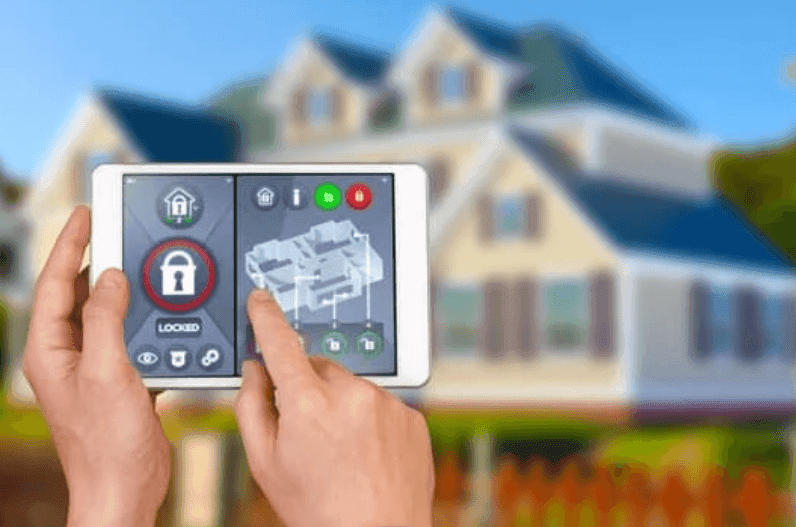
Protecting Home Smart Devices in the Age of IoT
How Cybersecurity Impacts Your Home
Smart homes are no longer a thing of the future. Home smart devices like smart locks, thermostats, cameras, and speakers are transforming everyday living, offering convenience, energy efficiency, and security. However, as these Internet of Things (IoT) devices become more prevalent, they also introduce significant cybersecurity risks.
What are some of the vulnerabilities of IoT devices and what can you do to secure your connected home?
The Dark Side of Smart Homes
While IoT devices make life easier, their integration into daily routines often comes with trade-offs in security. Many IoT devices lack robust security measures, making them easy targets for cybercriminals. Once compromised, these devices can be exploited to steal data, spy on households, or even gain access to other connected systems.
“Many IoT devices are designed with functionality in mind, but security often takes a backseat,” explains Sarah Wong, a cybersecurity consultant. “This creates vulnerabilities that hackers are quick to exploit.”
Real-World IoT Breaches
The risks associated with unsecured IoT devices are not hypothetical. Several high-profile incidents have demonstrated the dangers:
The Mirai Botnet Attack (2016): A massive cyberattack leveraged unsecured IoT devices, including cameras and routers, to create a botnet that took down major websites like Netflix and Twitter.
Smart Thermostat Hack: In 2021, a hacker accessed a family’s smart thermostat, raising the temperature to 90°F and locking the system with a ransom demand.
Baby Monitor Breach: Numerous cases have been reported where hackers gained access to baby monitors, using them to spy on families or shout disturbing messages.
These incidents highlight how everyday devices can be exploited if left unsecured.
Common Vulnerabilities in IoT Devices
- Weak or Default Passwords: Many devices come with default credentials that users fail to change, making them easy to hack.
- Unpatched Software: Manufacturers often release updates to fix vulnerabilities, but users rarely install them.
- Unsecured Network Connections: Devices that lack encryption or rely on outdated protocols expose sensitive data to attackers.
- Overlapping Devices: Each new device added to a network creates another potential entry point for hackers.
What You Can Do to Secure Your Smart Home
Protecting your IoT devices doesn’t have to be complicated. Here are a few simple yet effective steps to improve your smart home’s security:
- Change Default Passwords:
Create strong, unique passwords for all devices. Consider using a password manager to keep track of them. - Enable Two-Factor Authentication (2FA):
For devices and accounts that support it, enable 2FA to add an extra layer of protection. - Update Firmware Regularly:
Keep your devices’ software up to date to ensure known vulnerabilities are patched. - Use a Secure Network:
Set up a strong Wi-Fi password and consider using a separate network for IoT devices. Many routers now offer a guest network feature for this purpose. - Disable Unnecessary Features:
Turn off features like remote access or voice commands if you don’t use them. - Invest in a Firewall or IoT Security Hub:
Devices like IoT-specific firewalls can monitor and protect your connected devices from threats. - Be Cautious When Buying IoT Devices:
Research brands and products to ensure they prioritize security. Look for devices with encryption and frequent update support.
The Role of Awareness in IoT Security
Educating yourself and your family about IoT risks can significantly reduce the likelihood of breaches. For instance, teaching children not to share personal information through smart assistants or cameras can prevent privacy issues.
Cybersecurity consultant Sarah Wong advises, “Treat your smart devices like any other computer or smartphone, they need the same level of protection and vigilance.”
Balancing Convenience with Security
Protecting home smart devices in the age of IoT brings incredible convenience and innovation to our homes, but it also requires a shift in how we think about cybersecurity. By addressing common vulnerabilities and adopting best practices, you can enjoy the benefits of smart devices without compromising your privacy or safety.
For more tips and insights on safeguarding your digital life, stay tuned to Cyber News Live. Your smart home deserves smart security.
“Cyber News Live – Tomorrow’s Breach Today!”
This article was authored by Ronald Gross. Ron is a versatile writer and podcaster with a background in advertising copywriting. Ron’s knowledge of technology and security goes back to when he was working with Agencies in New York City on Tech & Security clients. He has written editorial articles on security, cybersecurity, and technology. Ronald always brings a wealth of experience and passion to everything he writes, producing work that informs and inspires.
If you’d like to be a freelance journalist, writer, or weekend warrior with Cyber News Live, please email us at contact@cybernewslive.com. Thank you!




